Crystals, Amulets & Talisman
In this third part of our ongoing miniseries of the arcane, we’re taking a strong divergence from signs, symbols, sigils, icons and religious symbology and instead discussing something quite different – Crystals, Talisman and Amulets.
Taken together, Crystals, Amulets and Talisman may only sound somewhat related, but the truth is they are closer to one another than you may initially think.
Since the dawn of humankind people have been drawn to the unique beauty of Crystals and precious stones of all kinds. Merged with metal into Amulets, Pendants and other spiritual articles these can be further consecrated into Talisman of all kinds. Imbued with magic Amulets, Talisman and Phylacteries have long been used by people of nearly all faiths to ward off evil spirits, protect from specific threats and even bring good luck.
In this piece we’re going to explore the three of these in-depth, starting with the earliest documented use of Crystals in a spiritual setting and advancing forward in time up to the present day where Crystals of all types are collected for their value, beauty and spiritual powers.
Early Use Of Crystals & Talisman
Crystals have long captivated the human imagination, their shimmering facets and enigmatic properties sparking wonder and fascination across civilizations. From the dawn of recorded history, these enigmatic gems have played a pivotal role in the lives of our ancestors, serving as talismans, healing tools, and conduits to the divine. As we delve into the captivating chronicle of crystals, we uncover a tapestry of ancient wisdom, spiritual symbolism, and the enduring allure of these natural wonders.
The Earliest Crystal Collectors: Paleolithic Peoples
The affinity between humans and crystals can be traced back to the Paleolithic era, a time when our ancestors were first drawn to the alluring beauty and perceived mystical powers of these natural formations. Archaeologists have unearthed evidence of some of the earliest known crystal collections, including beads carved from mammoth ivory and shells adorned with fossil shark teeth, dating back as far as 60,000 years. These ancient treasures, discovered in graves and burial sites, suggest that crystals held profound significance for our forebears, serving as protective amulets, decorative adornments, and perhaps even symbolic representations of the divine.
The Amber Road: A Conduit for Crystalline Trade
As human civilizations evolved, the trade and exchange of crystals became increasingly prevalent. One of the most well-documented examples is the Amber Road, a vast network of trade routes that connected the Baltic region to the Mediterranean world. Prized for its warm, golden hue and believed to possess healing properties, Baltic amber was highly sought after by ancient cultures, with evidence of its long-distance travel pointing to the value placed upon these organic gemstones.
Crystals in the Ancient World: Talismans, Rituals, and Symbolism
From the ancient Sumerians to the mighty Egyptians, civilizations across the globe revered crystals for their perceived mystical and protective qualities. The Sumerians, for instance, incorporated crystals into their magical formulas, while the Egyptians adorned their jewelry, statues, and even the tombs of their pharaohs with a dazzling array of gemstones, including lapis lazuli, turquoise, and carnelian. These crystals were believed to hold the power to ward off evil spirits, connect the wearer to the divine, and ensure a safe passage to the afterlife.
Crystals in Classical Antiquity: Greek and Roman Perspectives
The ancient Greeks and Romans also held crystals in high esteem, attributing a wide range of properties and symbolic meanings to these enigmatic stones. The word “crystal” itself derives from the Greek “krustallos,” meaning “ice,” as the Greeks believed that clear quartz was water that had frozen so deeply it would never melt. Amethyst, for example, was thought to prevent intoxication, while hematite was believed to offer protection in battle, with soldiers rubbing the reddish-brown iron ore over their bodies before going into combat.
Crystals in Asian Civilizations: Jade, Quartz, and Spiritual Significance
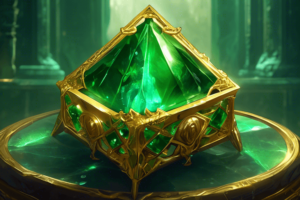
Across Asia, crystals have long held a revered place in cultural and religious traditions. In ancient China, jade was highly prized, with the emperors sometimes being buried in jade armor and musical instruments crafted from this precious stone. Jade was believed to possess healing properties, particularly for the kidneys, a belief shared by the Aztec and Mayan civilizations in the Americas. Similarly, quartz was imbued with spiritual significance, with the Buddhists of the 7th century describing a “Diamond Throne” made entirely of this crystalline material.
Crystals in Religious and Spiritual Practices
The use of crystals in religious and spiritual practices is a thread that runs through the tapestry of human history. From the breastplate of the High Priest in the Bible to the sacred lapidary treatises of Buddhism, these enigmatic stones have been imbued with profound symbolic and metaphysical meaning. The Hindus, Taoists, and Native American tribes are just a few examples of cultures that have long incorporated crystals into their rituals, ceremonies, and belief systems, recognizing their power to connect the earthly and divine realms.
The Renaissance and the Crystalline Resurgence
As the European Renaissance ushered in a new era of scientific inquiry, the use of crystals in healing and medicine experienced a resurgence. Scholars and physicians began to explore the therapeutic properties of various gemstones, often combining them with herbal remedies. This period also saw the emergence of beliefs about the potential for crystals to be corrupted by sin or inhabited by demons, leading to the practice of sanctifying and consecrating them before use.
The Beginnings of Crystal Healing
In the early 19th century, a series of experiments were conducted to investigate the effects of crystals on individuals believed to possess clairvoyant abilities. These studies, while not conclusive, sparked a renewed interest in the metaphysical properties of crystals and laid the groundwork for the modern crystal healing movement. Pioneers such as Edgar Cayce and Marcel Vogel would go on to make significant contributions to the understanding and practice of crystal healing, paving the way for its integration into alternative medicine and holistic wellness practices.
The Crystalline Comeback: Crystals in the Modern Era
In recent decades, crystals have experienced a remarkable resurgence in popularity, transcending the boundaries of alternative culture and becoming more widely accepted as a complementary therapy. The advent of the New Age movement in the 1980s played a pivotal role in this renaissance, with authors like Katrina Rafaell and Melody helping to popularize the use of crystals for healing, meditation, and spiritual psychic readings. Today, crystals can be found in everything from high-end jewelry and home decor to skincare products and technological applications, reflecting their enduring allure and versatility.
The Diverse Landscape of Crystals: Varieties and Properties
The natural world is home to an astounding array of crystalline structures, each with its own unique properties and energetic signatures. From the amethyst’s calming violet hue to the citrine’s vibrant golden glow, these gemstones have been imbued with a wide range of symbolic meanings and purported healing abilities. Quartz, in its many forms, has long been revered as the “master healer,” while other crystals, such as rose quartz and jade, are associated with love, abundance, and harmony.
Crystals in Science and Technology: Practical Applications
While crystals have long been celebrated for their metaphysical and spiritual properties, their practical applications in science and technology are equally remarkable. The piezoelectric effect of certain crystals, such as quartz, has revolutionized the world of timekeeping, enabling the precise measurement of time in clocks and watches. Additionally, the unique vibrational properties of crystals have found applications in medical imaging, with ultrasound technology relying on the controlled release of sound waves to produce detailed visualizations of the human body.
Crystals and the Future: Innovations and Possibilities
As our understanding of the natural world continues to evolve, the role of crystals in shaping the future is poised to become even more significant. From advancements in renewable energy storage to the development of novel materials for medical and technological applications, these enigmatic gems hold the potential to unlock new frontiers of human knowledge and innovation. As we delve deeper into the captivating history and diverse applications of crystals, we can only imagine the incredible discoveries that lie ahead, cementing their status as timeless marvels of the natural world.
Earliest Documented Collection
The earliest documented collection of crystals dates back to the Upper Paleolithic period, around 60,000 years ago. Archaeologists have uncovered beads carved from mammoth ivory and shells adorned with fossil shark teeth, suggesting that even our earliest ancestors were captivated by the allure of these natural formations.
In antiquity, a wide variety of crystals were commonly used, including amber, jet, quartz, lapis lazuli, turquoise, carnelian, and malachite. These crystals were collected for a range of purposes, from protective amulets and decorative adornments to ritual objects and symbols of status and wealth.
People in ancient civilizations believed that crystals possessed a wide range of powers, from warding off evil spirits and ensuring safe passage to the afterlife to promoting healing, fertility, and divine connection. The number of crystal types found in nature is truly staggering, with estimates ranging from hundreds to thousands of distinct crystalline structures.
Humanity’s fascination with the mystical and the protective has endured for millennia, manifesting in the timeless symbols of talismans and amulets. These enigmatic objects, imbued with the power of belief and tradition, have captivated cultures across the globe, serving as both functional tools and sartorial statements of personal identity. From the ancient Egyptians’ scarab amulets to the Viking’s Mjolnir pendants, the history of these enigmatic artifacts is a testament to the enduring human desire to harness the unseen forces of the universe.
The Origins of Amulets and Talismans
The distinction between amulets and talismans is a nuanced one, yet both share a common thread of harnessing the supernatural for practical purposes. Amulets, derived from the Latin word “amulētum,” were objects believed to possess inherent protective powers, often crafted from natural materials like stones, bones, or plant matter. Talismans, on the other hand, were more intentionally crafted, their designs and symbols imbued with specific metaphysical properties to bestow their owners with desired attributes, such as luck, health, or wisdom.
Prehistoric Protectors: The Earliest Amulets
The use of amulets can be traced back to the Paleolithic era, where our ancestors adorned themselves with simple pendants fashioned from shells, teeth, and bones. These early amulets were likely imbued with symbolic meaning, representing the wearer’s connection to the natural world and its perceived mystical forces. The discovery of perforated bear teeth and mammoth ivory in archaeological sites across Eurasia suggests that these primitive talismans held deep significance for the people who crafted and wore them.

The Scarab’s Sacred Symbolism
One of the most iconic amulets of the ancient world was the scarab beetle, revered by the ancient Egyptians for its symbolic connection to the sun, rebirth, and the afterlife. These intricate, beetle-shaped pendants were worn by both the living and the dead, believed to restore the heart of the deceased and guide them safely through the underworld. The scarab’s enduring popularity as a protective amulet speaks to the power of nature-inspired symbolism in ancient cultures.
Talismans of the Ancient World
As civilizations grew in complexity, the creation of talismans became an increasingly specialized craft, with skilled artisans imbuing these objects with complex symbolism and ritual significance. The ancient Mesopotamians, for example, crafted talismans engraved with astrological symbols and Quranic verses, believed to harness the power of the heavens for protection and divination. Similarly, the famous Seal of Solomon, a hexagram-shaped talisman, was thought to grant its wearer control over spirits and bestow wisdom.
Amulets in Medieval and Renaissance Europe
During the Middle Ages and Renaissance, the use of amulets and talismans continued to evolve, reflecting the religious and cultural influences of the time. Christian amulets often featured relics of saints or inscriptions from sacred texts, while Jewish communities developed a thriving tradition of crafting protective amulets, known as kameas, inscribed with Hebrew letters and mystical symbols. Meanwhile, the European elite adorned themselves with rings and pendants engraved with alchemical symbols and zodiac signs, imbuing these objects with occult significance.
The Enduring Allure of Turquoise
Among the most enduring and versatile of amulet materials is turquoise, a sky-blue mineral revered for its protective and healing properties across numerous ancient cultures. From the ancient Egyptians and Chinese to the Native American tribes of the Southwest, turquoise has been carved into a myriad of talismanic forms, from necklaces and bracelets to bow and arrow adornments. The stone’s vibrant hue and association with the heavens have long made it a symbol of good fortune and divine favor.
Amulets in the Modern Era
While the specific beliefs and practices surrounding amulets and talismans have evolved over time, their allure as both protective and decorative objects has endured into the modern era. Today, people from diverse cultural backgrounds continue to wear and display these enigmatic symbols, finding solace in their perceived metaphysical properties or simply appreciating their timeless aesthetic appeal. From the Maasai tribe’s beaded amulets to the ubiquitous “evil eye” charms found across the Mediterranean, the enduring power of these ancient symbols remains a testament to the human desire to harness the unseen forces of the universe.
The Symbolic Language of Stones
The materials used in the creation of amulets and talismans have long been imbued with symbolic meaning, each stone or metal carrying its own unique metaphysical associations. Lapis lazuli, for example, has been revered since ancient Mesopotamia for its connection to divinity, royalty, and good fortune, while amethyst has been prized for its ability to promote sobriety and clarity of mind. The careful selection and combination of these charged materials have allowed artisans to craft talismanic objects tailored to the specific needs and beliefs of their wearers.
Amulets in the Ancient Egyptian Tradition
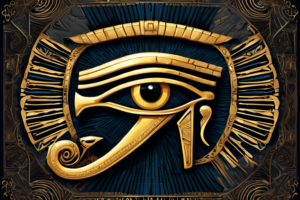
The ancient Egyptians were masters of the amulet, crafting an extensive array of protective symbols from a diverse range of materials. Beyond the iconic scarab, the Egyptians also revered the Eye of Horus, a stylized eye that was believed to ward off evil and restore health. These amulets were often buried with the dead, ensuring the deceased’s safe passage to the afterlife, and were also worn by the living to invoke the blessings of the gods.
Talismans in Islamic and Jewish Traditions
In the Islamic and Jewish faiths, the creation and use of talismans has long been a significant spiritual practice. Islamic talismans, known as hafiz, often featured verses from the Quran or the names of Allah, believed to grant the wearer protection and spiritual guidance. Similarly, Jewish communities developed a rich tradition of crafting kameas, amulets inscribed with Hebrew letters and mystical symbols, to ward off illness, attract prosperity, and safeguard the home.
The Symbolic Power of Beads
Beads, among the earliest forms of personal adornment, have long been imbued with talismanic significance across diverse cultures. From the Paleolithic period to the present day, these tiny tokens have served as a means of communication, signifying social status, spiritual beliefs, and personal identity. Whether strung into necklaces, bracelets, or sewn onto garments, beads have acted as portable repositories of symbolic meaning, connecting the wearer to the rich tapestry of human history.
The Enduring Allure of Amulets and Talismans
In a world increasingly dominated by technology and scientific rationalism, the enduring appeal of amulets and talismans speaks to the persistent human need for a sense of mystical connection and personal empowerment. Whether worn as a statement of cultural identity, a talisman of good fortune, or a tangible link to the divine, these enigmatic objects continue to captivate and inspire, reminding us of the timeless power of belief and the enduring human quest to harness the unseen forces of the universe.
Unveiling the Mystical Origins of Phylacteries
Phylacteries, also known as tefillin, have long held a revered place in Jewish religious practices, serving as physical embodiments of the divine commandments. However, the origins of this curious ritual can be traced back to a far more ancient tradition – the use of amulets and talismans for supernatural protection. In this comprehensive exploration, we will unravel the captivating history of phylacteries, delving into their evolution from ancient Mediterranean amulets to their modern-day ritual observance.
The Ancient Roots of Amulets
The ancient world was a realm teeming with supernatural forces, and the inhabitants of the Mediterranean region sought to harness these powers through the use of amulets – objects imbued with mystical properties. These talismanic items, often inscribed with sacred texts or symbols, were believed to offer protection, healing, and even influence the course of events. From ancient Egypt to Carthage and beyond, the practice of wearing or carrying amulets was widespread, serving as a tangible link between the physical and the divine.
The Emergence of Written Amulets
The use of written amulets can be traced back as early as the 8th century BCE in Egypt, where inscribed metal foils were placed on the bodies of the deceased to shield them from the dangers of the underworld. Over time, these inscribed objects gained popularity among the living, becoming a common sight across the ancient Mediterranean. Greek amulets frequently featured verses from Homer, the most revered text of the Hellenistic world, while Punic-Phoenician communities in North Africa and Sardinia favored tubular capsules containing inscribed messages.
The Significance of Inscribed Texts
The presence of sacred texts on these ancient amulets was not merely ornamental; it was believed that the very act of inscribing and wearing the words imbued the objects with supernatural power. The wearer was thought to be under the protection of the divine forces invoked through the inscribed verses, granting them safeguard from harm and the ability to influence their own fate.
The Emergence of Phylacteries
As the Jewish community encountered the widespread use of amulets in the ancient Mediterranean, they too began to explore the potential of inscribed objects as a means of spiritual observance. This led to the development of phylacteries, which can be seen as a uniquely Jewish adaptation of the amulet tradition.

The Biblical Origins
The concept of phylacteries finds its roots in the biblical passages of Deuteronomy, where the Israelites are commanded to “tie them as symbols on your hands and bind them on your foreheads” (Deuteronomy 6:8, 11:18). The rabbis interpreted these verses as a literal instruction to wear inscribed objects, leading to the creation of the phylactery ritual.
The Qumran Scrolls and Early Iterations
The earliest known phylacteries were discovered among the Dead Sea Scrolls found in the Judean Desert, dating back to the 1st or 2nd centuries BCE. While these early phylacteries exhibited some variations from the modern practice, they were clearly based on the same biblical passages that inspired the ritual’s development.
The Protective Function of Phylacteries
Much like their ancient amulet counterparts, phylacteries were believed to offer the wearer divine protection and a connection to the sacred. The inscribed verses, drawn from the Book of Exodus and Deuteronomy, were thought to imbue the phylacteries with the power to safeguard the individual and ensure their well-being.
The Ritual Observance of Phylacteries
As the practice of wearing phylacteries became more firmly established within the Jewish tradition, a complex set of rules and regulations emerged to govern its proper observance.
The Anatomy of Phylacteries
Phylacteries are composed of small, square leather boxes containing parchment inscribed with the relevant biblical passages. One phylactery, known as the “shel yad,” is worn on the arm, while the other, the “shel rosh,” is worn on the forehead. Intricate specifications dictate the size, shape, and placement of these ritual objects.
Ritual Practices and Regulations
The donning of phylacteries is a daily ritual observed by observant Jewish men, typically during morning prayers. Strict guidelines govern the proper way to tie the phylacteries, the direction of the straps, and the sequence of the verses. Failure to adhere to these detailed regulations was seen as a violation of the divine commandment.
The Symbolic Significance
Beyond their practical application, phylacteries held deep symbolic significance within the Jewish tradition. The placement of the phylacteries on the arm and forehead was believed to represent the unity of thought and action, with the hand phylactery symbolizing the performance of mitzvot (commandments) and the head phylactery representing the internalization of the divine word.
The Shift from Amulet to Ritual
The transition of phylacteries from their ancient amulet origins to their modern ritual observance was a complex and nuanced process, shaped by the evolving theological and cultural landscape of the Jewish community.
The Rabbinic Reinterpretation
As the Jewish community grappled with the biblical injunction to “tie them as symbols on your hands and bind them on your foreheads,” the rabbis of the Talmudic era sought to reinterpret the meaning of these verses. Rather than viewing them as a literal command to wear inscribed objects, the rabbis began to emphasize the metaphorical significance of the commandment, focusing on the internalization of the divine word.
The Shift from Amulet to Ritual
Despite this theological shift, the practice of wearing phylacteries persisted, albeit with a greater emphasis on ritual observance rather than supernatural protection. The rabbis carefully codified the specific requirements and regulations surrounding the use of phylacteries, transforming them from amulets to sacred ritual objects.
The Preservation of Protective Elements
While the primary focus of phylacteries shifted towards ritual observance, certain elements of their protective function were preserved within the evolving halakhic (Jewish legal) framework. For instance, the exclusion of women and children from wearing phylacteries, as well as the prohibition of wearing them on the Sabbath, can be interpreted as remnants of their earlier amulet-like purpose.
The Enduring Legacy of Phylacteries
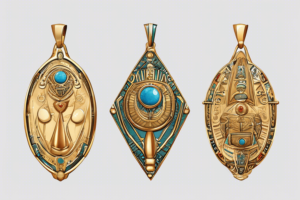
The practice of wearing phylacteries has persisted throughout the centuries, remaining a central component of Jewish religious observance to this day. However, the significance and interpretation of this ritual have continued to evolve, reflecting the dynamic nature of Jewish theology and the ongoing dialogue between tradition and modernity.
The Symbolic Significance in Jewish Thought
In contemporary Jewish thought, phylacteries are often viewed as symbols of the internalization of the divine commandments, serving as a tangible reminder of one’s obligation to live a life guided by the principles of the Torah. The ritual of donning phylacteries has become a daily opportunity for spiritual introspection and the reaffirmation of one’s commitment to the Jewish faith.
The Ongoing Debate and Interpretation
The precise nature and purpose of phylacteries have been the subject of ongoing debate and reinterpretation within the Jewish community. While some maintain a strictly literal interpretation, others have explored more metaphorical and symbolic understandings of the ritual, aligning it with the evolving theological landscape of modern Judaism.
The Relevance in the 21st Century
As the world continues to grapple with the challenges of modernity, the practice of wearing phylacteries remains a powerful symbol of the enduring relevance of Jewish tradition. For many observant Jews, the ritual serves as a daily reminder of their connection to the divine, a testament to the resilience and adaptability of this ancient practice.

Conclusion
The history of Crystals, Amulets, Talisman, Charms and Phylacteries is a captivating journey that spans millennia, tracing the evolution of a ritual rooted in the ancient tradition of every culture on the planet. From their origins in the biblical injunctions to their modern-day observances by metaphysicians and spiritualists alike, these objects have continued to hold a significant place within the faiths of many people the world over.
This concludes our adventure through this exciting history of these beautiful items.
What do you think? Be sure to subscribe here and comment, let us know what you think in the comments section below and tell us your thoughts on the subject.


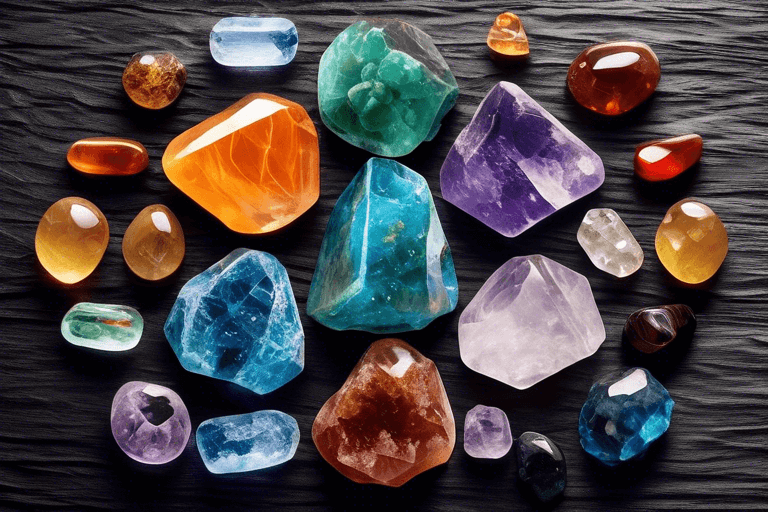
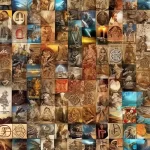

3 Comments
Anonymous
I am sure this piece of writing has touched all the internet
users
Jake Gleason
This was a very hard topic to cover because of the struggle – when to stop! – it just goes deeper and deeper and deeper and the truth is, there is an almost endless tradition of talisman, amulets, crystals, symbols, sigils, phylacteries and on and on and on. I decided to kind of stop at what I felt was enough to inform upon the basic outline of each topic without going too deep and confusing the reader. I hope I succeeded.
I would love to hear a critique from someone else about this. What do you think? any takers?
What is Spiritual Reading from a Psychic Perspective? – Most Gifted
[…] been believed to hold powerful energies. Ancient civilizations, such as the Egyptians and Greeks, used crystals for protection, healing, and spiritual […]